Reinforced-concrete flexural members must have adequate stiffness to limit deflection to an amount that will not adversely affect the serviceability of the structure under service loads.
Beam and One-Way Slabs. Unless computations show that deflections will be small (Table 9.14), the ACI 318 Building Code requires that the depth h of nonprestressed, one-way solids slabs, one-way ribbed slabs, and beams of normalweight concrete with Grade 60 reinforcement be at least the fraction of the span L given in Table 9.15.
When it is necessary to compute deflections, calculation of short-term deflection may be based on elastic theory, but with an effective moment of inertia Ie.
For normal-weight concrete,

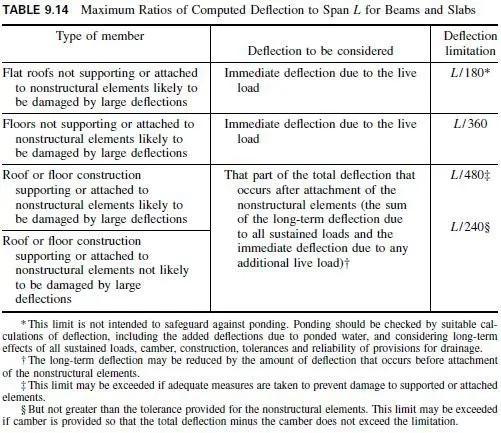

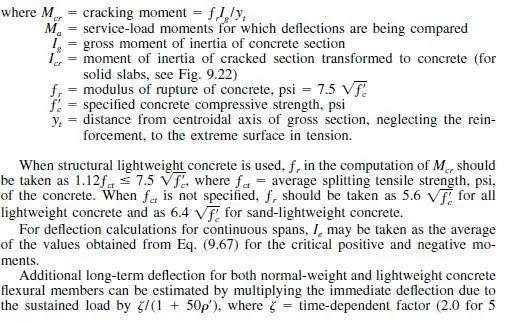
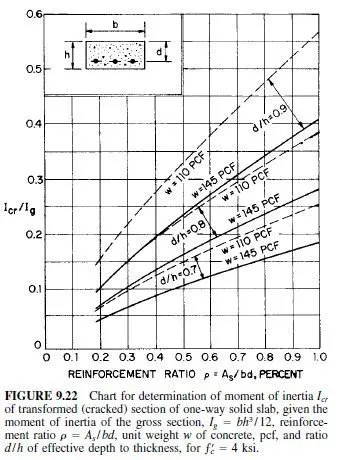
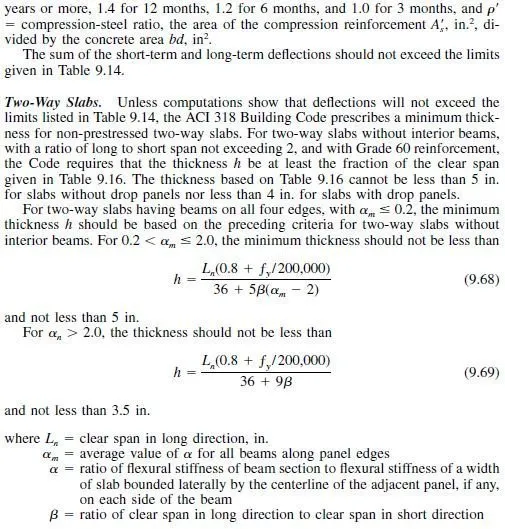
The computed deflections of prestressed-concrete construction should not exceed the values listed in Table 9.14.
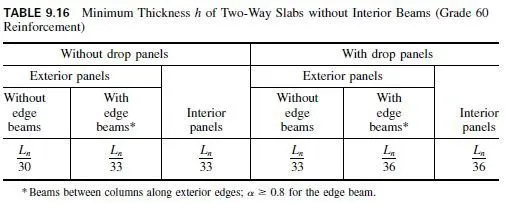
ONE-WAY REINFORCED-CONCRETE SLABS
A one-way reinforced-concrete slab is a flexural member that spans in one direction between supports and is reinforced for flexure only in one direction (Art. 9.52). If a slab is supported by beams or walls on four sides, but the span in the long direction is more than twice that in the short direction, most of the load will be carried in the short direction; hence, the slab can be designed as a one-way slab.
One-way slabs may be solid, ribbed, or hollow. (For one-way ribbed slabs, see Arts. 9.54 to 9.58.) Hollow one-way slabs are usually precast (Art. 9.100). Castin- place, hollow one-way slabs can be constructed with fiber or cardboard-cylinder forms, inflatable forms that can be reused, or precast hollow boxes or blocks. Oneway slabs can be haunched at the supports for flexure or for shear strength.


